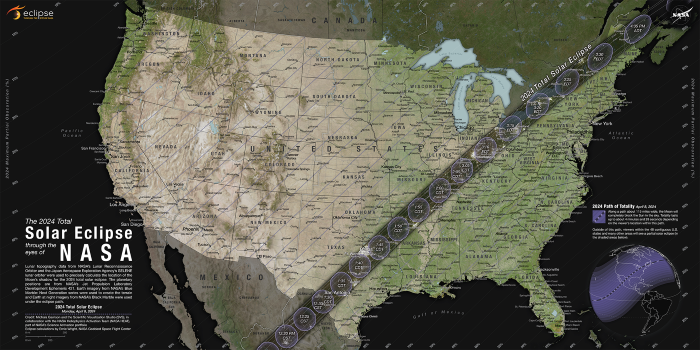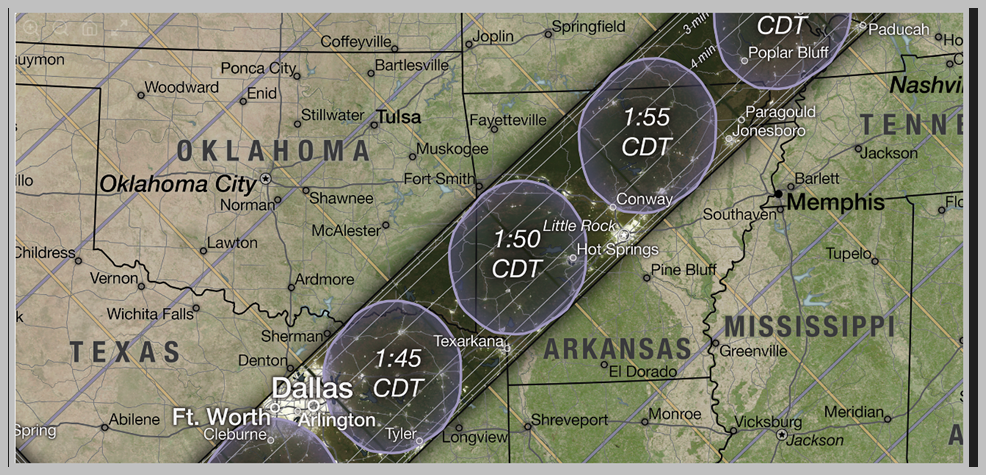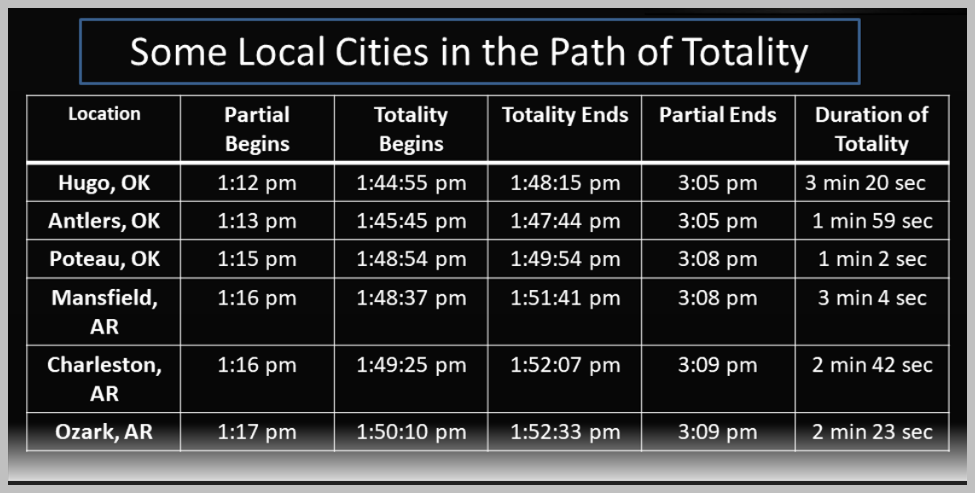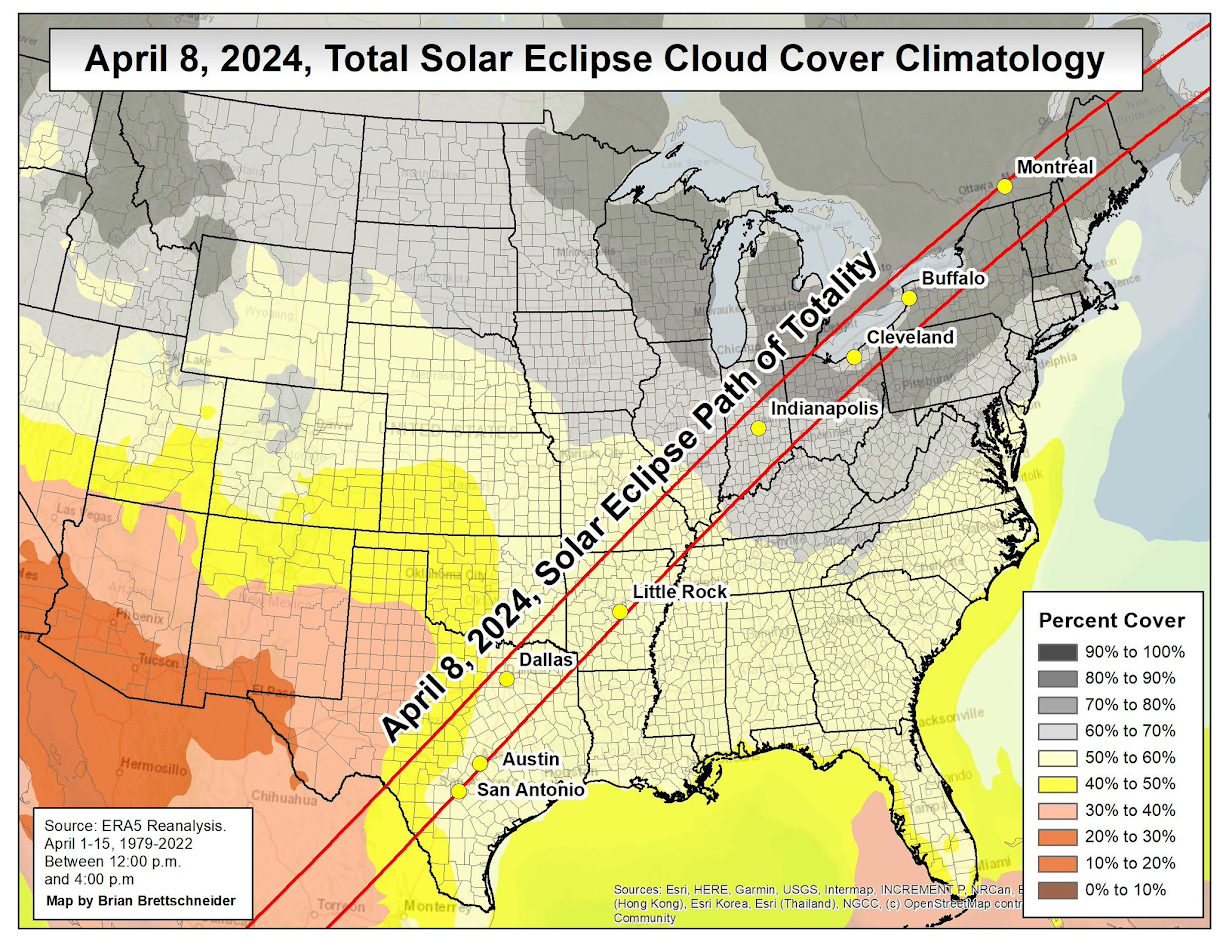
Due to system updates at NWS Tulsa today and Thursday, there will be data disruptions on web, Noaa Weather Radio and recorded phone tree forecasts and current information. We will restore normal service as soon as possible. Hopefully by the end of the Thursday. Read More >

| On Monday, April 8, 2024, a rare total solar eclipse will be observed across Mexico, the United States and Canada. The path of totality will be carved out across southeast Oklahoma and west-central Arkansas from southwest to northeast during the early afternoon hours. A total solar eclipse occurs when the Moon orbits between the Sun and Earth, casting a shadow on the earth’s surface. Total solar eclipses occur somewhere on Earth every 18 months on average. However, the Moon’s diameter is roughly one-quarter of Earth’s (about the width of Australia), so it casts a small shadow. Thus, any given location on Earth is estimated to see a total solar eclipse only every 360 to 410 years on average. Saying this event is “rare” may be taking it too lightly. |
Courtesy of NASA
|
| For some, it is a once in a lifetime event. The next total solar eclipse viewable in the contiguous United States will be more than 20 years later on August 22 and 23 of 2044. The next total solar eclipse viewable in Oklahoma and Arkansas will be on August 12, 2045. | |





Eye and Skin Safety During a Total Solar Eclipse
It is always harmful to your eyes to look directly at the Sun without specialized eye protection, with the exception of the few minutes during totality. Normal sunglasses DO NOT provide sufficient protection to look directly at the Sun, eclipse viewers will need special eclipse glasses or a handheld solar viewer. Looking at any part of the Sun through a camera lens, binoculars, or a telescope without a special-purpose solar filter secured over the front of the lens will cause severe eye injury.
Below are some important safety guidelines to follow during a total solar eclipse, courtesy of NASA: